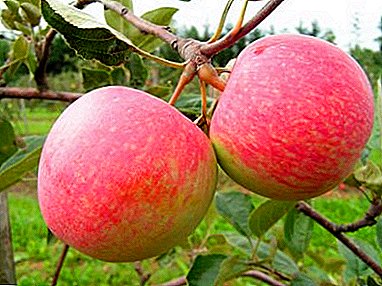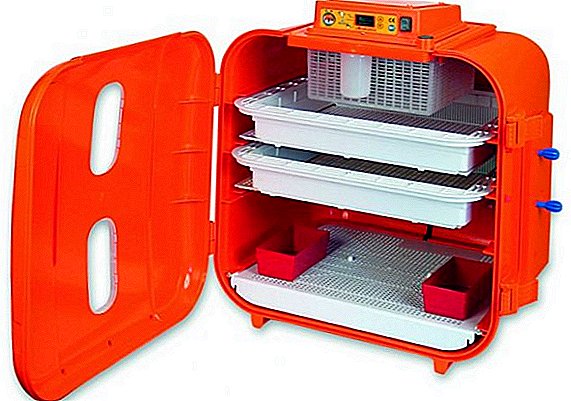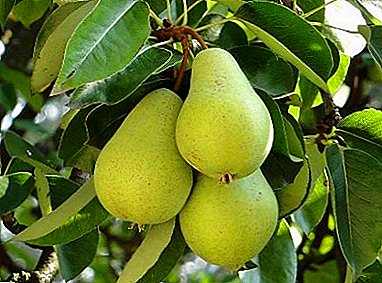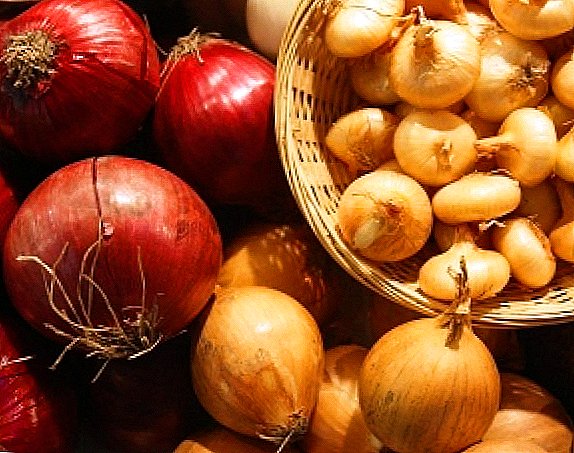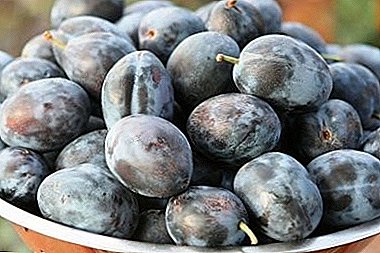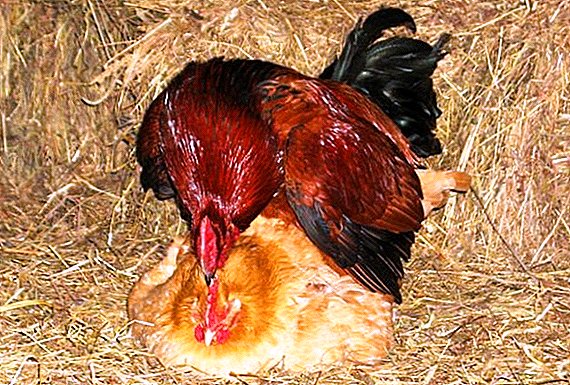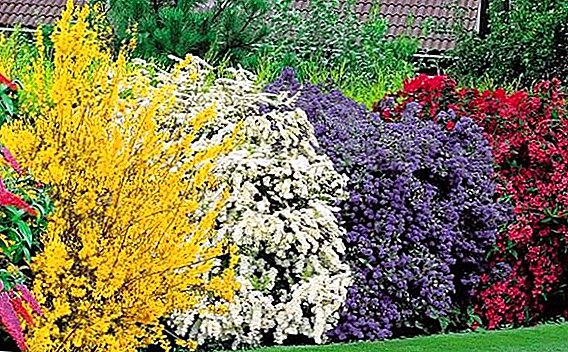
Recently, a method of growing seedlings of pepper, and other vegetables, in "snails" has become very popular, and many farmers have already parted ways with the boxes, appreciating this method.
Other common names for this method of growing seedlings - landing in the "rolls", roll-up method or Kerimov method.
Growing seedlings in the "snails" can not only experienced gardeners, but also those who are just beginning to comprehend the basics of working with seed.
Advantages of the method
To the main advantages of growing pepper seedlings in snails include:
- Getting high quality planting material. Seedlings in "snails" are less likely to undergo pulling and disease.
- The ability to control seed germination and the rejection of weak plants at the stage of spitting.
- The ability to control moisture in the "snail". With proper care, the seedlings are practically not sick with a “black leg”, and the soil does not grow moldy.
- Saving space for growing seedlings, compactness. In one "snail", with a diameter of 20 cm, you can grow up to 100 healthy plants.
- Ease of subsequent picks. With the gradual unfolding of the "snail" plants from it can be reached without disturbing the root system.
- Easy accessibility and low cost of necessary consumables for planting seedlings.
- The ability to reuse consumables.
This is due to insufficient lighting or waterlogging of the soil, but with a different method of cultivation, these same factors can significantly reduce the quality of seedlings.
What is required
 In order to start sowing pepper seeds in the "snail", you must prepare:
In order to start sowing pepper seeds in the "snail", you must prepare:
- Laminate underlay. The optimum substrate thickness is 2 mm. Material - porous polypropylene. This material is considered environmentally friendly and even allowed to come into contact with food.
- Toilet paperbetter double layer.
- Soil mixture.
- The prepared soil should be light, not contain in its composition of foreign inclusions.
- It is better to sift through a garden sieve before use.
- It is necessary to moisten the earth to the state when, when clenched in a fist, it will keep a clod, but try not to overwet it.
- Thin gum or rope to consolidate the resulting "snail". Ideal for this purpose gum for money.
- Water tank.
- Syringe or pulverizer for the convenience of watering.
- Tweezers for the convenience of laying out the seeds of pepper.
- Food package or cling film to create a greenhouse effect.
- Containerin which the snail will be placed.
- In diameter, the container should be 1-5 cm larger than the diameter of the "snail" obtained.
- Small plastic buckets, plastic containers made from mayonnaise or other food products are good for this purpose.
- Sawdust will help to avoid excess moisture and form the necessary microclimate in the container with the "snail".
- If desired growth stimulator can be used. Perfectly suitable for this purpose "Epin", "Epin-Extra", "Energen".
Landing technology
- Step 1.
- Step 2.
- Step 3.
- Step 4.
- Step 5.
- Step 6.
- Step 7.
- Step 8.
- Step 9.
Prepare the substrate. Use a stationery knife to cut a strip from a roll of fake material 15-17 cm wide. We put on a convenient for work surface.
On the entire length of the strip from the substrate lay out toilet paper.
Important! The upper edge of the substrate in the future "snail" should be 1-1.5 cm above the layer of toilet paper. This is the required depth of sowing pepper seeds for germination.
After that, we moisten the toilet paper with a syringe. If desired, a growth stimulator can be added to the water as recommended in the package.
 Backing off 3-4 cm From the beginning of the strip, we begin to spread the seeds with tweezers. The optimal distance between them 2 cm.
Backing off 3-4 cm From the beginning of the strip, we begin to spread the seeds with tweezers. The optimal distance between them 2 cm.
After all the seeds are laid, neatly turn off the "snail"starting from the side where they started to lay out the seeds.
Do not forget that the seeds of different varieties may have different terms of germination. This can cause difficulties in assessing germination.
Read more about seed preparation before sowing.
We put the "snail" in the container Seed side up and cover with bag or cling film to create a greenhouse effect and maintain a constant level of humidity. Place the container in a warm place for germinating seeds.
After a while, and for pepper seedlings usually 3-4 days, check our "snail". By this time, all the seeds have to turn and form "loops" of plants.
We lay the "snail" on its side and carefully unwind it, trying not to harm the plants. We reject the seeds that are not spilled and very weak sprouts. In their place you can put new seeds of pepper.
Now our seedlings will need more solid nutrition. Over the entire width of the unwound tape pour the prepared soil mixture in a layer 1-1.5 cm. Slightly seal it on the tape and sprinkle them with an atomizer.
Wrap the snail again. Now it turns out much wider in diameter.
If necessary, add a little more soil from above and water it abundantly.
Poured sawdust at the bottom of the container. Place the resulting snail back into the container and cover with a film or package.
Learn more about when additional lighting may be needed.
After the appearance of the cotyledon leaves, the bag or film from the seedlings can be removed. But do not rush to do it right away. Teach "your seedlings to this gradually. In the" snail "with soil mixture, seedlings can develop well before the age of the pick.
Caring for seedlings in the "snail" is watering. Watering plants need on top of the "snail" as long as the plants are small, and the root system is not sufficiently developed. This is most conveniently done with a syringe. As plants grow, you can switch to radical irrigation. How and when to start feeding?
REFERENCE! Learn about different methods of growing peppers: in peat pots or tablets, in open ground and without picking, and even on toilet paper. Learn what diseases and pests can attack your seedlings?
Useful materials
Read other articles on pepper seedlings:
- Proper cultivation of seeds and whether to soak them before sowing?
- How to grow black pepper peas, chili, bitter or sweet at home?
- What are growth promoters and how to use them?
- The main reasons why the leaves are twisted at the shoots, the seedlings fall or are pulled out, and also why the shoots die?
- Terms of planting in the regions of Russia and especially the cultivation in the Urals, in Siberia and the Moscow region.
- Learn yeast based fertilizer recipes.
- Learn the rules of planting Bulgarian and hot peppers, as well as dive sweet?
In conclusion, we offer you a video for clarity of the knowledge gained:


